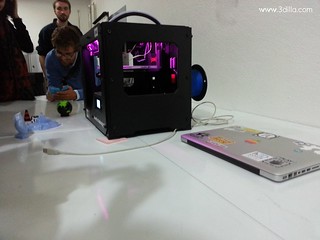How Will 3D Printing Impact Order Fulfillment?

The prophecies and predictions for supply chain management in 2014 have all been published by now, giving professionals in our industry a good idea of where we're going in the next twelve months. But an influential new technology was notable by its absence, that of 3D printing.
Right now the idea of 3D printers in every home is still a very futuristic notion. Although the products exist - in fact, some were just unveiled last week at the Consumer Electronics Show in Las Vegas - the high price will limit early purchases to technology enthusiasts and affluent hobbyists.
The potential is there, however, to significantly disrupt the way physical products are made and delivered. This will impact order fulfillment and logistics, if not this year then almost certainly in the few that follow.
Order Fulfillment in the Age of 3D Printing
Much depends not only on how the technology develops, but how consumers choose to adopt it. Where people spend dollars will influence the companies that make 3D printers to focus on certain priority areas.
Some of the questions that arise are:
- Will home 3D printing be popular? Do people want to cut out all of the steps in between and print their own products, or will a professional, heavy duty printing device be required to produce items of a suitable quality?
- What are the limitations of 3D printers? Is there a point at which consumers will prefer a product that is made by traditional manufacturing processes, even when a 3D printed version is quicker to obtain.
- Which industries are most likely to be early adopters? Where will the trend spread first?
All of these considerations will affect where and when 3D printing begins to reshape the supply chain.
If home printing takes off in a big way, there are of course huge implications for the production, storage and shipment of goods. The reality is probably somewhere in between, however, with some products being suitable for home printing and others requiring a professional device that the everyday consumer is not willing to invest in. This would provide an opportunity for closer integration between manufacturers and logistics companies to bring in enterprise-level 3D printing equipment, developing new processes to produce, package and ship orders immediately.
As the CEO of 3D Systems Inc, Avi Reichental, suggested at the Consumer Electronics Show last week, "there are far reaching social impact opportunities, going from ideas to products in hours & days." Although the promise is still very much more than the actual product at the moment, it's a good idea for supply chain managers and logistics professionals to read up on the technology and monitor its development.
3D printing may impact our industry sooner than we think and it will pay to be prepared!